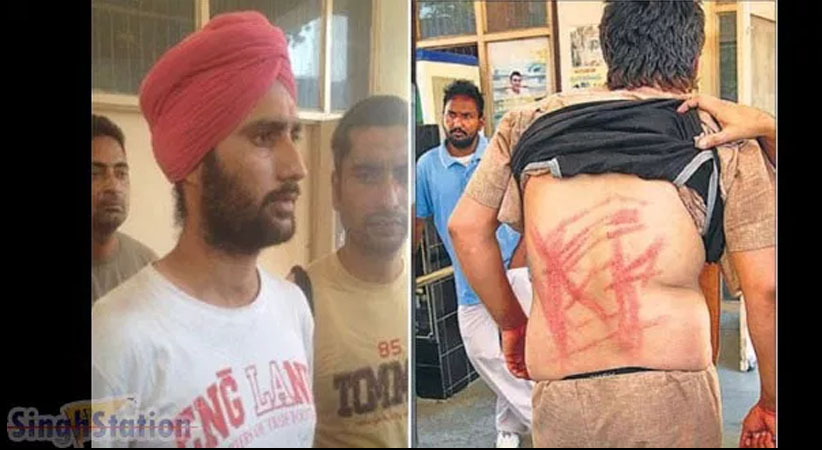NEWS & MEDIA
NEWS & MEDIA
Kerala India | 2014-05-29Religion, Caste, and Electoral Geography in the Indian State of Kerala

During elections the Christians are heavily courted. There had been a lot of news about the national Bharatiya Janata Party (BJP) wooing the Christians in Kerala for the 2014 elections. Narender Modi (BJP’s prime-ministerial candidate) shared the platform in September 2013 with Mar Thoma Syrian Church Metropolitan Philipose Mar Chrysostom when he attended the birthday celebration in Kerala of Mata Amritananandamayi, the hugging Hindu female guru, who has a global following. The influential Syrian Christian clergy that usually sides with the Indian National Congress has been making generous statements about Narender Modi. BJP [however] has yet to win a seat in Kerala.
In order to elucidate the relationship in Kerala between religious and caste groups, on the on hand, and voting behavior, on the other, I have prepared a series of maps showing the distribution of the state’s leading social groups, which can be compared with maps depicting election returns (posted below). Firm conclusions are admittedly difficult to draw from these maps, as most of these social groups are widely distributed and complexly interspersed, and hence the following analysis should be viewed as merely suggestive. In constructing these maps, I have used data found in the Wikipedia article “Religion in Kerala,” which in turn is derived from the book Dynamics of Migration in Kerala: Dimensions, Differentials, and Consequences,by Kunniparampil Curien Zachariah, Elangikal Thomas Mathew, Sebastian Irudaya Rajan (Orient Longman, 2003). Unfortunately, this information is somewhat dated, as it comes from a 1998 survey. Since that period, the Muslim population has increased relatively to the Christian and Hindu populations, due largely to a higher birthrate. It should also be noted that different sources of information provide different figures on religious adherence. A map of Christianity in Kerala posted above that Regina Doss created for her class project, using information from the 2001 census of India, shows significantly lower proportions of Christians in many districts of Kerala than do the maps that I have made. But despite these data inconsistencies, the basic geographical patterns remain relatively consistent.
One pattern found on these maps is a vague association between the Ezhavas, members of a low Hindu caste, and electoral support for the far left, visible particularly in regard to Kannur district in the north. This pattern is of long-standing, persisting despite efforts since the late 1990s by the BJP to court this group as well. The Ezhavas are an unusual community in that they have historically been considered Dalits (outcastes or “untouchables”) even though their economic position has more closely resembled that of the Sudras (the largest, and lowest, of the four varna orders of Hindu society). As George Woodcock explains in his fascinating 1967 book Kerala: A Portrait of the Malabar Coast (Faber and Faber, London):
The Ezhavas, the most numerous of all the Hindu groups in Kerala, are also the most puzzling of its peoples. Subdues by centuries by the Brahmins and the Nairs, regarded as outside the four-fold caste system, they nevertheless retained a pride even in their position as the leading caste of the outcastes, and during the nineteenth century developed a great will to rise above the limitations which society had laid upon them … . The Ezhavas sought education, even established their own schools… . Fortunate Ezhavas took to business and the Congress Party: unfortunate ones to radical rebellion, for the poor Ezhavas have long formed the dedicated core of the Communist Party in Kerala. … No group anywhere in India has so successfully, by its own efforts, removed itself from the double stigma of untouchability and ex-untouchability (pp. 62,63).
Kerala’s more marginal groups have also tended to support the far left. The Revolutionary Socialist Party is strongest in the southern district of Kollam, where its support is concentrated among fishing communities that are generally placed in the low “scheduled caste” category. In mountainous eastern Kerala, members of scheduled castes and scheduled tribes are also numerous, and some of these areas also tend to support the far left. Latin Christians, quite unlike Syrian Christians, also tend to be associated with a low social position, but the areas in which they are concentrated do not seem to be very electorally distinctive.
Several other intriguing patterns are also evident. Support for the regionalist Kerala Congress Party is strongest in Kottayam, which is often considered the heartland of the Syrian Christian Community. The Wikipedia article on the party contends that it is dominated by Syrian Christian farmers, although it also notes that “leaders from all communities are represented.” In regard to the Muslim population, the correlation between geographical distribution and support for the Indian Union Muslim League is clear, although it must be noted that a number of heavily Muslim areas have supported other parties.
In regard to the Nairs, the situation seems to be more complicated. A 2012 blog post on the topic by a “Progressive Hindu Nair” has some interesting observations. As the author notes:
While the Congress lead front’s support used to come from Christians, Nairs and Muslim population, Left front’s support base was a group consisting of Ezhavas and scheduled castes. A section of economically backward Nairs and Christians also used to support Marxists. Muslim support to left groups has always been minimal generally. Though this is the basic truth, it should be forgotten that the leadership of CPI (M) and its parliamentary face was constituted by upper caste Hindus (Mostly Nairs) the policies of the party were pro-minority and backward community; a complex situation indeed.
Till 1990’s Nairs constituted a major chunk of leadership both in Congress and CPI (M). In a way it had helped Nair community in the sense that Nair leaders often helped many individuals belonging to nair community. But they did not help community as a whole. It should also be noted that individuals of Nair community got help not because of any deliberate strategy of Nair leaders. The leaders helped their acquaintances and friends among whom naturally there were a lot of Nairs and indirectly Nairs have benefited.
Yes, a complex situation indeed, which is one reason why Kerala is such a fascinating and important place. What I find particularly interesting is the combination of high social development and the historical legacy of extreme caste divisions. In earlier times, Kerala not only had “untouchables” but also “unseeables,” unfortunate individuals who were supposed to ring bells as they walked so that members of higher social orders could avoid the visual pollution that came from looking at them.
GeoCurrents
Link to Source: http://www.geocurrents.info/place/south-asia/religion-caste-electoral-geography-indian-state-kerala













